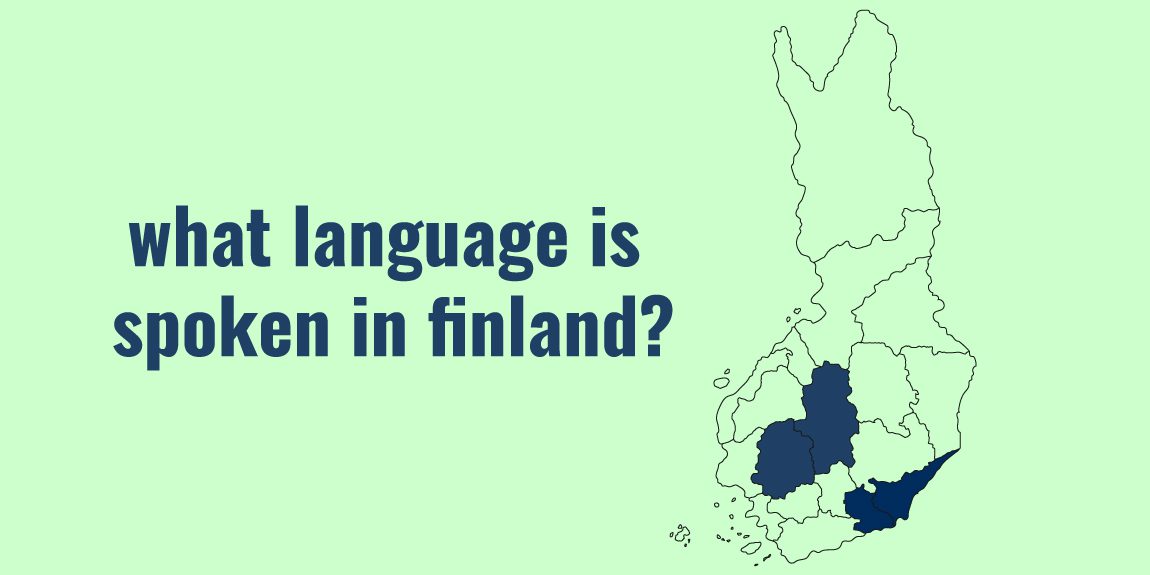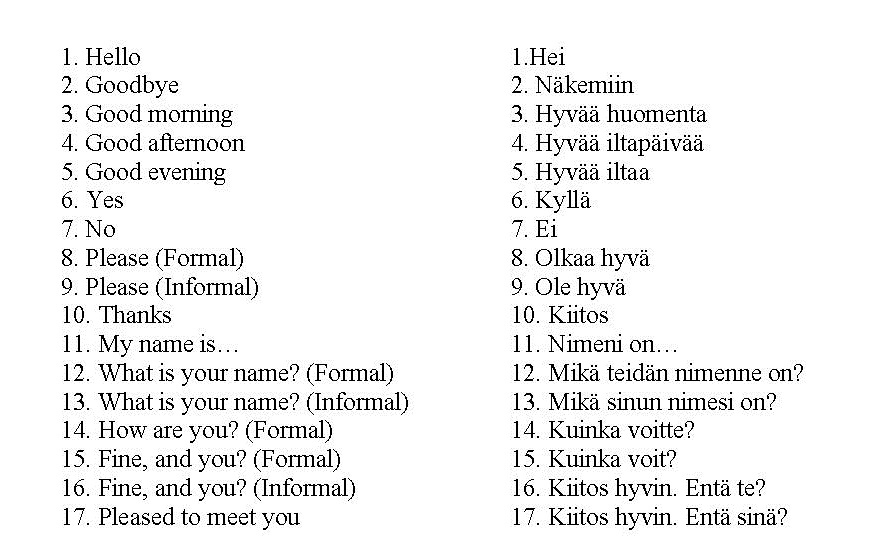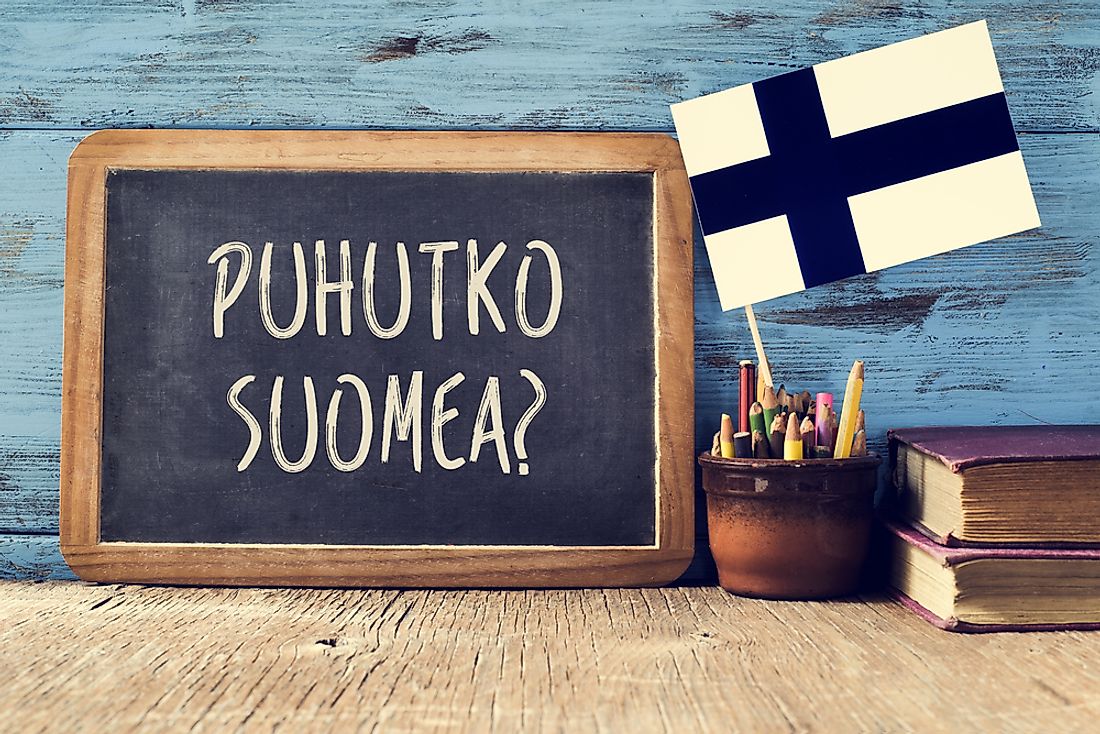Embark on a linguistic journey with finland language translation to english, exploring the intricacies of this captivating language and the challenges and rewards of bridging its gap with English. Delve into the unique characteristics, rich history, and global reach of Finnish, unraveling the complexities of translating between these two distinct tongues.
As we delve deeper, we’ll uncover the common pitfalls and triumphs encountered in Finnish-English translation, examining the grammatical and cultural nuances that can make all the difference. Discover the various methods employed for accurate and effective translation, weighing the pros and cons of machine translation versus the expertise of human translators.
Finnish Language Overview
The Finnish language, spoken by approximately 5.5 million people worldwide, stands out as a unique and fascinating member of the Uralic language family. Its distinct characteristics, rich history, and widespread geographical distribution make it a language of great interest to linguists and language enthusiasts alike.
Unique Characteristics
Finnish is renowned for its agglutinative nature, a feature that allows words to be formed by adding suffixes to a root word. This results in exceptionally long words that can convey complex meanings with remarkable precision. For example, the word “taloissannekin” translates to “even in your houses”.
Another distinctive aspect of Finnish is its vowel harmony system, which requires vowels within a word to conform to a specific pattern of front or back vowels. This rule ensures a harmonious and euphonious sound in Finnish speech.
Brief History
The origins of the Finnish language can be traced back to Proto-Uralic, a hypothetical ancestral language spoken thousands of years ago. Over time, Finnish diverged from other Uralic languages and developed its own unique characteristics.
The earliest written records of Finnish date back to the 16th century, with the first Finnish translation of the New Testament appearing in 1548. Since then, Finnish has undergone significant standardization and modernization, becoming the official language of Finland in 1892.
Prevalence and Geographical Distribution
Finnish is the official language of Finland and is spoken by the vast majority of the country’s population. It is also recognized as a minority language in Sweden, where it is spoken by the Finnish-speaking population in the northern part of the country.
Outside of Finland and Sweden, Finnish is spoken by immigrant communities in various countries around the world, including the United States, Canada, and Australia.
Finnish-English Translation Challenges

Translating Finnish to English presents unique challenges due to the inherent differences between the two languages. These challenges stem from grammatical disparities, cultural nuances, and the distinct nature of each language’s vocabulary and syntax.
Grammatical Differences
Finnish and English exhibit significant grammatical differences that can impact translation accuracy. For instance, Finnish employs a complex case system with 15 different cases, while English relies on prepositions to indicate grammatical relationships. This disparity requires careful attention to context and nuanced understanding of both languages.
Additionally, Finnish has a rich system of verb conjugation, with numerous tenses, moods, and aspects. These grammatical intricacies can pose challenges when translating into English, as the target language may not possess direct equivalents for all Finnish verb forms.
Cultural Nuances
Cultural nuances also play a crucial role in translation accuracy. Finnish culture is known for its subtlety and indirect communication style, which can be difficult to convey in English. Translators must be aware of these cultural differences to avoid misinterpretations or mistranslations.
For example, Finnish speakers often use understatement and understatement, which can be challenging to translate into a more direct English style. Additionally, Finnish humor and idioms may not have direct counterparts in English, requiring translators to find creative solutions to convey their intended meaning.
Methods for Finnish-English Translation

There are several methods used for Finnish-English translation. The choice of method depends on factors such as the purpose of the translation, the desired quality, and the available resources.
Machine Translation
Machine translation (MT) uses computer software to translate text from one language to another. MT systems are trained on large datasets of parallel texts, which are texts that have been translated by human translators. MT systems can be fast and inexpensive, but the quality of the translation can vary.
Advantages of Machine Translation
- Fast and inexpensive
- Can translate large volumes of text quickly
- Can be used for a variety of languages
Disadvantages of Machine Translation
- The quality of the translation can be poor
- MT systems may not be able to handle complex or nuanced text
- MT systems may not be able to translate cultural references or idioms
Human Translation
Human translation is performed by a human translator who translates text from one language to another. Human translators are able to produce high-quality translations that are accurate, fluent, and culturally appropriate.
Advantages of Human Translation
- High-quality translations
- Can handle complex or nuanced text
- Can translate cultural references or idioms
Disadvantages of Human Translation
- Slow and expensive
- May not be available for all languages
Tips for Selecting the Appropriate Translation Method
The following tips can help you select the appropriate translation method for your needs:
- Consider the purpose of the translation. If the translation is for a legal document or a marketing campaign, you will need a high-quality translation that is accurate and fluent. If the translation is for a personal blog or a social media post, you may be able to get away with a lower-quality translation.
- Consider the desired quality. If you need a high-quality translation, you should use a human translator. If you are on a tight budget, you may be able to get away with a machine translation.
- Consider the available resources. If you have a lot of time and money, you can use a human translator. If you are on a tight budget or deadline, you may need to use a machine translation.
Resources for Finnish-English Translation
Online Dictionaries and Translation Tools
Online dictionaries and translation tools can provide quick and convenient assistance for Finnish-English translation. Some popular options include:
- Google Translate:A widely used online translation tool that supports over 100 languages, including Finnish and English.
- Linguee:An online dictionary that offers translations and example sentences for a variety of language pairs, including Finnish and English.
- WordReference:A comprehensive online dictionary that provides definitions, translations, and usage examples for Finnish and English words.
Professional Translation Services, Finland language translation to english
For accurate and professional Finnish-English translations, it is recommended to engage the services of a professional translation company. Reputable translation agencies typically employ experienced translators who are native speakers of the target language and have expertise in specific domains, such as legal, medical, or technical translations.
Finnish Language Learning Resources
To improve your proficiency in Finnish and enhance the accuracy of your translations, consider utilizing the following language learning resources:
- Duolingo:A free online language learning platform that offers interactive lessons and exercises for Finnish learners.
- Babbel:A subscription-based language learning app that provides structured courses and personalized lessons for Finnish learners.
- Rosetta Stone:A comprehensive language learning software that offers immersive lessons and speech recognition technology for Finnish learners.
Applications of Finnish-English Translation
Finnish-English translation plays a vital role in facilitating communication, fostering cultural exchange, and supporting various industries. Its applications extend across diverse fields, including:
Business and Commerce
Finnish-English translation is essential for businesses operating in global markets. It enables communication with international clients, partners, and investors, facilitating cross-border trade, negotiations, and collaborations.
Education and Research
Translation services are crucial for students, researchers, and academic institutions. They allow access to research papers, textbooks, and other educational materials written in Finnish, fostering knowledge exchange and promoting academic collaboration.
Tourism and Travel
For tourists and travelers from English-speaking countries, Finnish-English translation is indispensable. It helps them navigate local attractions, understand cultural customs, and communicate effectively with locals, enhancing their travel experience.
Cultural Exchange
Translation plays a pivotal role in promoting cultural exchange by making Finnish literature, films, and other creative works accessible to a global audience. It fosters cross-cultural understanding, appreciation, and dialogue.
Future of Finnish-English Translation

The future of Finnish-English translation is promising, driven by advancements in machine translation technology and the increasing globalization of the world.
Machine translation has made significant strides in recent years, with neural machine translation (NMT) systems achieving near-human quality for many language pairs. As NMT systems continue to improve, they will become even more valuable for Finnish-English translation, providing fast, accurate, and affordable translations.
Globalization and Finnish-English Translation
Globalization is also driving the demand for Finnish-English translation. As businesses and organizations become increasingly interconnected, the need for communication across language barriers is growing. Finnish-English translation plays a vital role in facilitating this communication, enabling businesses to expand their reach and collaborate with partners around the world.
Last Point
In closing, the future of Finnish-English translation holds exciting possibilities, with advancements in technology and the ever-evolving landscape of globalization shaping its trajectory. As the world becomes increasingly interconnected, the need for seamless communication across languages will continue to grow, making the art of translation more vital than ever before.
Clarifying Questions: Finland Language Translation To English
What are the key challenges in Finnish-English translation?
Finnish and English possess distinct grammatical structures and cultural contexts, which can lead to challenges in accurately conveying meaning and tone.
How can I choose the right translation method for my needs?
Consider the nature of your text, the desired level of accuracy, and your budget when selecting between machine translation or human translation services.
Where can I find resources to enhance my Finnish language skills?
Online dictionaries, language learning apps, and immersion experiences can provide valuable support for improving your proficiency in Finnish.